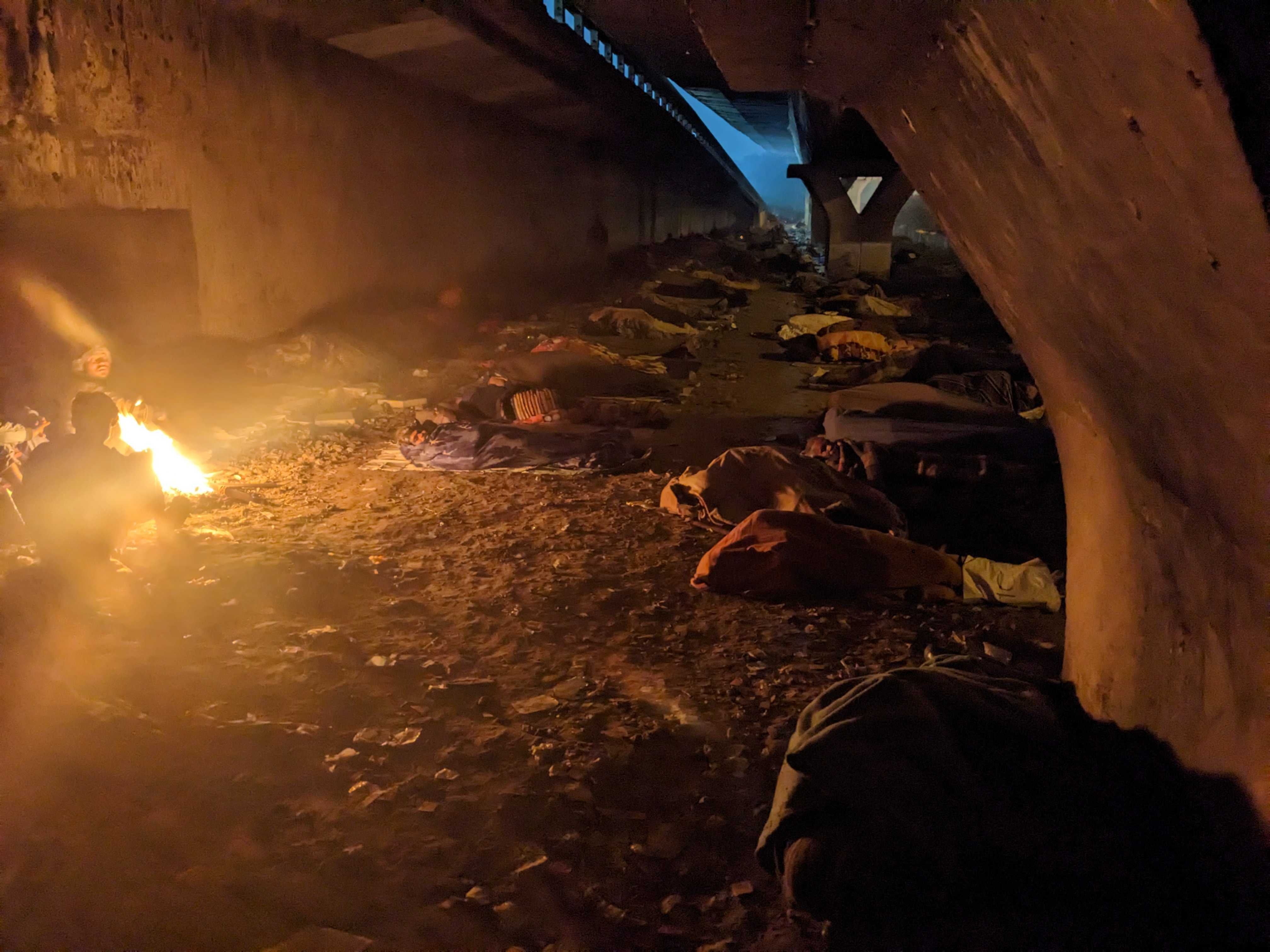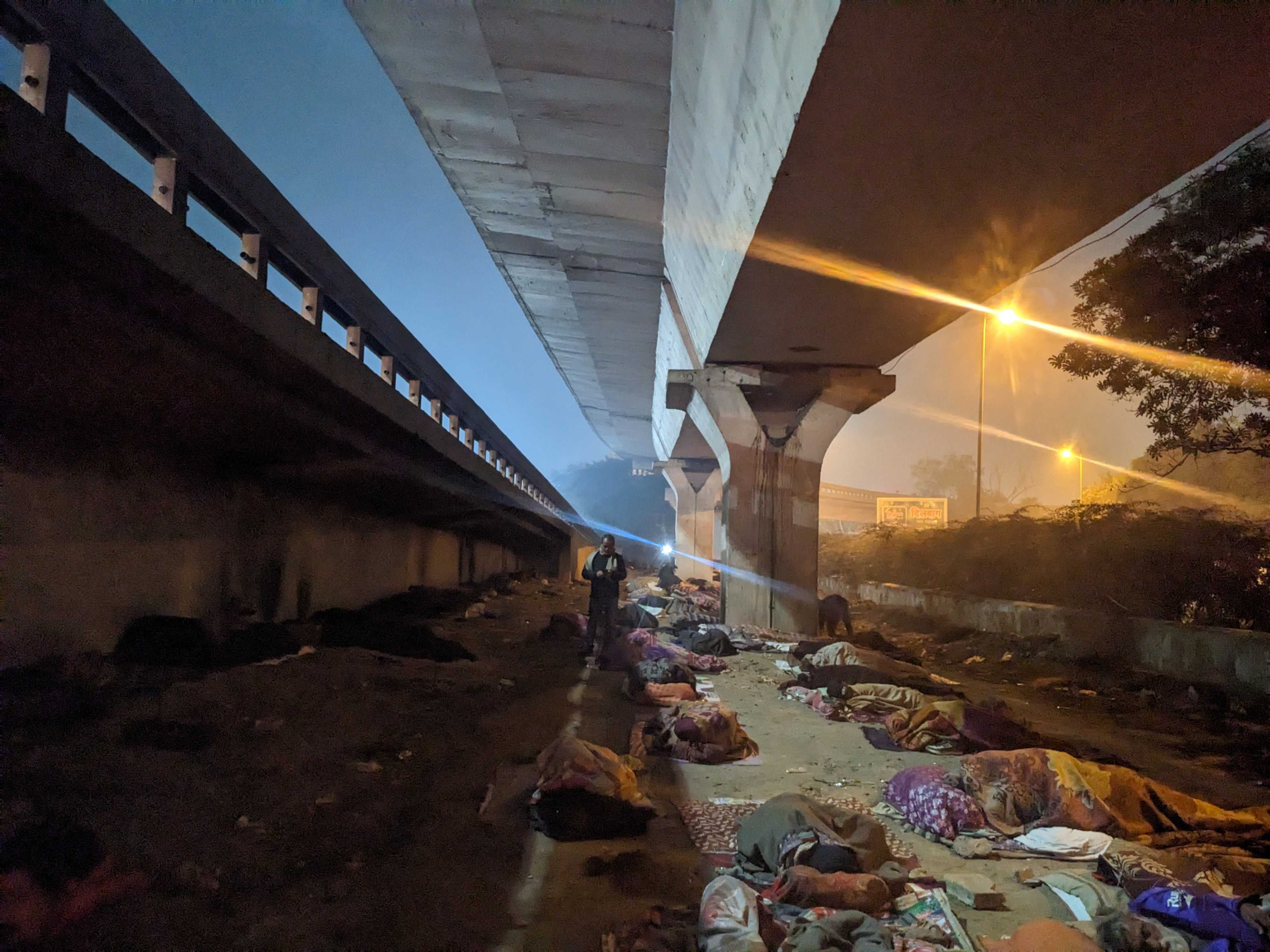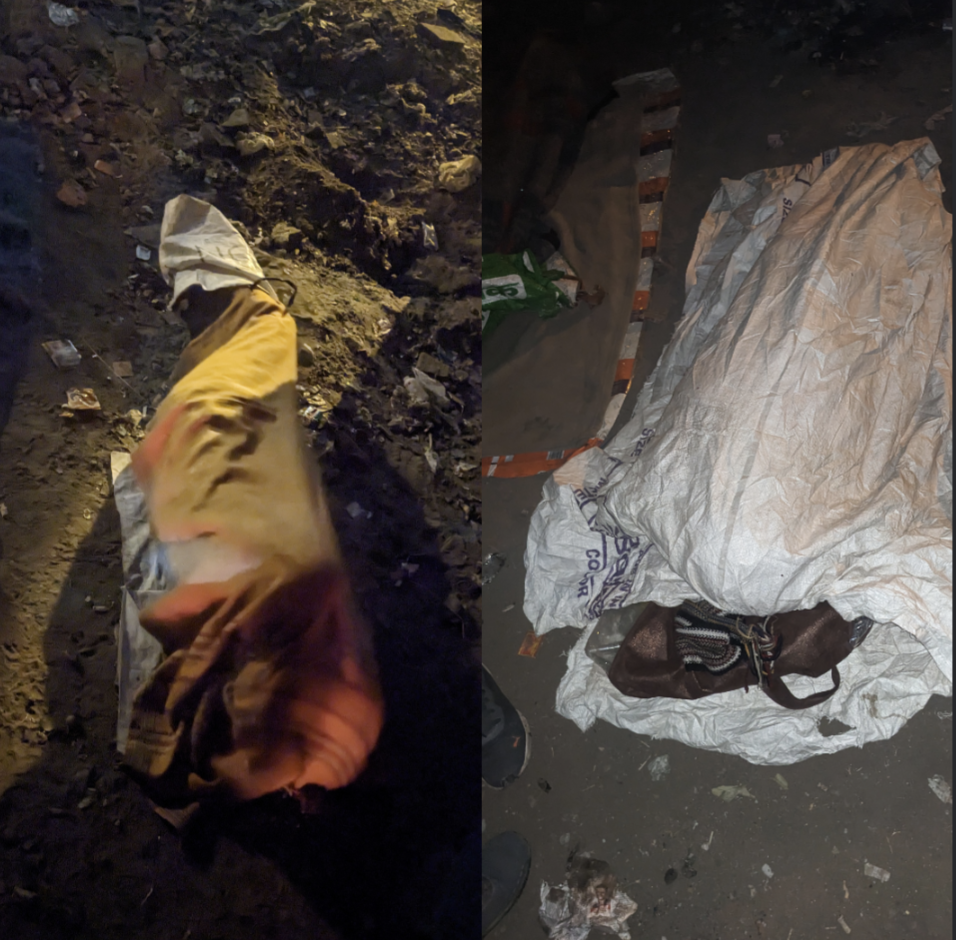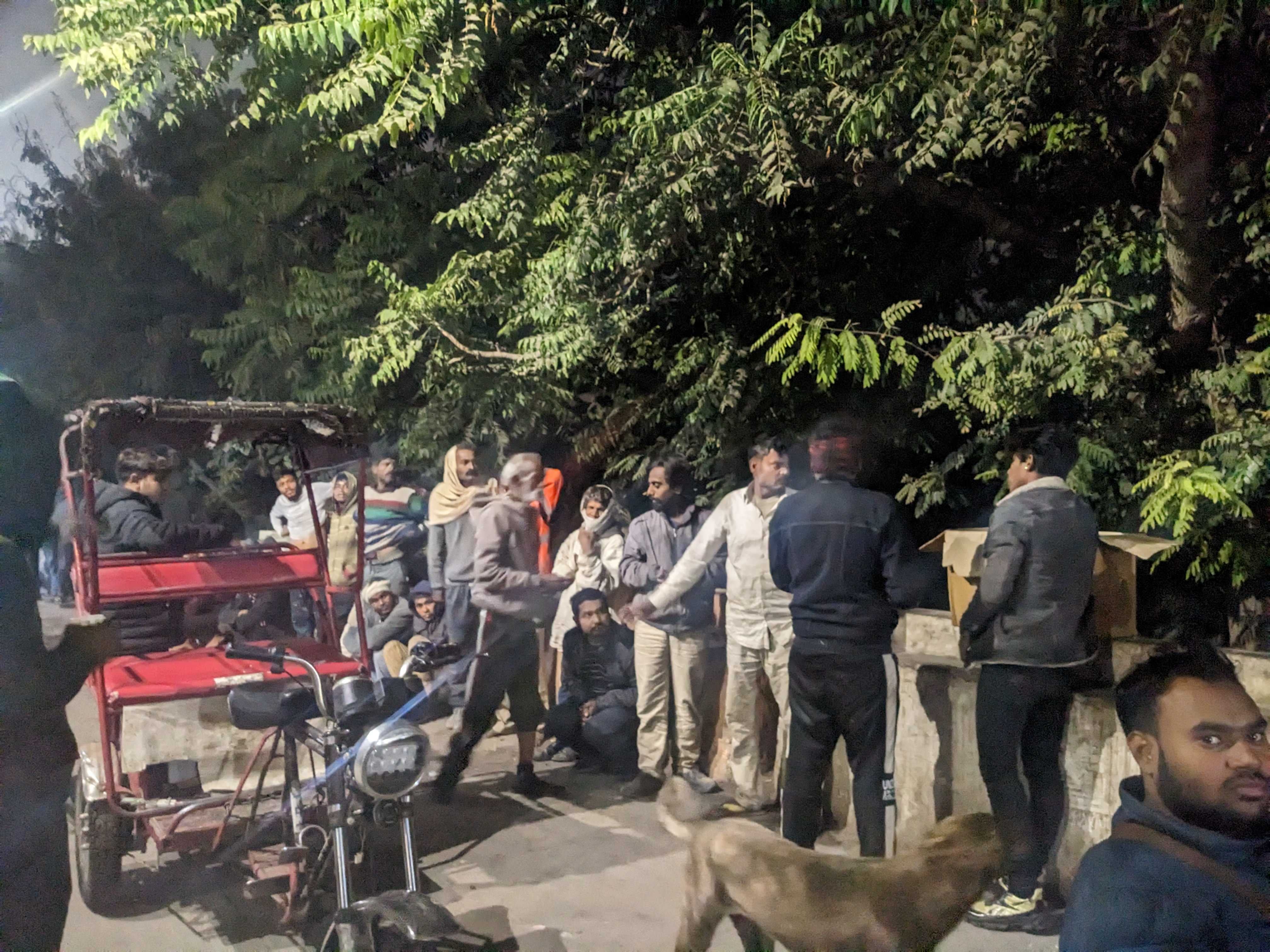Delhi’s homeless brace for plunging temperatures as volunteers find ‘up to 10 bodies a day’ in cold snap
Freezing fronts present an increasingly common and deadly threat to the tens of thousands who sleep on Delhi’s streets. Stuti Mishra reports from a bitter night in the Indian capital


As midnight approaches and shops close in Old Delhi’s bustling markets, hundreds of homeless begin to lay down thin mattresses or plastic sheets on the dusty pavement as they brace for a long night during a lethal cold snap.
The street in this part of the Indian capital, just behind the historic Turkman Gate entrance to the old city, is lined with rough sleepers as far as the eye can see, some huddled close to each other for warmth and some covering themselves in whatever piece of cloth or plastic they could find. A warm blanket, they say, is a luxury here.
It is also just a few steps away from several of the biggest government-run homeless shelters in the capital region, but many of these rough sleepers have been turned away due to a chronic shortage of beds.
Last week Delhi saw the mercury dip below 3C in some areas, and forecasters predict another big drop in temperatures over the coming days, with this January expected to prove one of the coldest in years. In Delhi, where average June temperatures are 39C, even affluent homes and offices are ill-equipped to deal with such cold conditions. Worried rough sleepers toldThe Independent of their fears for finding a warm bed during this icy weather.
“The shelter homes are for those who arrive there first,” says Vikas Kumar, a daily wage labourer who is one of the hundreds of people sleeping below the Faridabad bus station flyover near the Inter-State Bus Terminal (ISBT) in central Delhi.
“We work till late at night, we can’t reach the shelter homes and line up for a bed. By the time we arrive the shelters are already full,” he says. Others say they have given up even trying.
The barriers preventing people accessing services can be bureaucratic as well as practical. Anoop Mishra, a master’s graduate who lost his job last year, says he was turned away from a shelter for not carrying any form of government identity proof.
“You are not even treating us like citizens,” he alleges of those who run the shelters, as he says he made several attempts to get a bed without any success.

Central Delhi is a hub for almost half of the capital’s shelter homes due to its large influx of daily wage workers from nearby states, many of whom cannot afford to pay for rented accommodation after sending what little money they earn back home to support their families.
Organisations working in the area say the capacity of these shelters, known in Hindi as rain basera (nightly homes), is far below the demand yet also exaggerated in government figures.
Official figures claim the city’s 195 permanent homeless shelters can accommodate about 17,000 people, with several temporary facilities opened this year as winter sets in, taking the total number close to almost 300, according to the Delhi Urban Shelter Improvement Board (DUSIB).
But even for those who make it within the confines of these shelters – 82 buildings, 112 port cabins, three temporary buildings, and 79 tents – the lives of the homeless remain challenging. A large centre near Turkman Gate that claimed to house approximately 300 people had only seven toilets on the premises, with two of these reserved for the disabled.
Visits by The Independent to some of the larger centres show the number of beds is nowhere close to the claims made in official filings by the government.
“Government officials say these people don’t want to sleep in the shelters because of the free blankets and food they receive outside, but show me where they can fit any new person here when beds and even the floor is full?” says Sunil Kumar Aledia of the Centre For Holistic Development (CHD), an NGO, who has been working with homeless people in Delhi since 2019.
Government-appointed caretakers say they try to accommodate anyone who arrives, and if there’s no space, they send them to another shelter.
“We call on the helpline number and a car arrives to take the person to another shelter,” says Mohammad Tanwir, a caretaker at a centre behind the Ramleela Ground, a park and local landmark. The people sleeping outside had a different story.
Haseena, 41, who sleeps sharing a single blanket with her 10-year-old son, says she was turned away from the only women’s shelter in the area because there was no space.
“I am ill and they don’t have enough space for us,” she says, adding that she is receiving treatment for throat cancer. “It is extremely cold now, I want to be close to hospital and not be moved to a different area.
“At least I have a blanket here to cover myself,” she says, adding the nights she spent in the shelter were if anything more challenging.

A woman’s shelter visited by The Independent, which claims to house approximately 40 people, proved to be a single room with 12 people sleeping on mattresses on the floor.
Madhu, the caretaker, says she tries her best to accommodate every new person. “We ask women to shift and make space for another person, but sometimes there is no option but to turn away that person,” she says, with disappointment.
An official arrives to take stock of these shelter homes; he declines to speak on record, but says people can call on a government helpline number to lodge a request to be taken to the shelters. Asked about the hundreds sleeping outside the shelter’s doors, he had no response.
For many rough sleepers, even finding a decent corner on the roadside can prove difficult as they have to fight off rivals and sometimes stray dogs for their spot.
Empty spaces below flyovers, where construction material and rubbish pile up, are seen as an ideal place, away from the eyes of the police officials who they claim often harrass them to move.
“The government doesn’t have a problem with them as long as they are away from public sight,” says Khushi Chand, a volunteer from CHD.
These volunteers are often the only ray of hope for the city’s homeless – uncounted, but estimated in the thousands – who come with requests for blankets, food and sometimes jobs.

As well as running shelters, volunteers often go on rounds checking on those sleeping rough, and in the current cold snap they are often encountering dead bodies.
“We find anywhere from one to 10 bodies almost every day, sometimes more,” says Mr Aledia, adding that providing medical attention to the homeless is also a struggle as ambulance drivers often refuse to take them for treatment without a caretaker to vouch for them.
“The homeless have been isolated from society and looked at with disgust, they don’t have access to clean water or a bathroom so it’s impossible for them to maintain hygiene, hence medical staff also don’t want to take care of them,” he says.
Better-known for the searing heat for much of the year, Delhi has seen increasingly intense cold snaps in recent times. Research from IPE-Global using Indian Meteorological Department data suggests a 60 per cent increase in cold spell days in India in the last decade, although the long-term average reflects global warming.
This year’s winter is set to break all records, with Delhi and neighbouring Punjab state both seeing record low minimum temperatures. Mahesh Palawat of Skymet, a weather forecasting service, blames climate change for disrupting weather patterns.
“Delhi is witnessing extreme summer and extreme winter,” says Mr Palawat. Skymet is forecasting that “icy cold winds from the western Himalayas [will] drop the night temperatures in Delhi and temperature can now go down to 2C to 3C in the coming days in some pockets” this weekend.
Last year, CHD claimed 145 people died in January – although the the Delhi government calls their data “fake” and “fabricated”.
In a press release last month, the Delhi Urban Shelter Improvement Board (DUSIB) said its team of 15 rescue vans would scout the city every night looking for homeless people in distress. Many people on the streets tell The Independent that vans pass through the area without stopping. DUSIB says its shelters are “well equipped with blankets, food and beds to serve the needs of homeless suffering in peak winters of Delhi”.
The Independent has approached the board for further comment.






Join our commenting forum
Join thought-provoking conversations, follow other Independent readers and see their replies
Comments